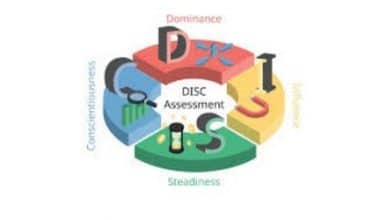Strong employee value propositions (EVPs) set you apart from the competition and can help you attract and retain top talent. Learning what your present employees like about your firm and what candidates want in their ideal environment is the first step in developing a successful EVP.
You’ll learn what an EVP is and how excellent EVPs may help you acquire top talent in the sections below. This article also discusses the characteristics of a good EVP and includes various employee value proposition examples to assist you in developing your own.
What is the Employee Value Proposition EVP?
An employee value proposition is a distinct value you provide as an employer to your employees in exchange for their talents, experience, and dedication to your organization. Salary, perks, rewards, career growth, and work-life balance are all part of this, as are your values, mission, social purpose, and company culture.
Essentially, the goal of your EVP is to find and explain all of the unique benefits and experiences that employees may expect if they choose to work for your company. It also explains why your organization is the ideal fit for the employees who thrive there and assists you in attracting the right people who are aligned with your unique offering.
What is the Distinction Between Your EVP and Your Company Brand?
Internally, your employee value proposition communicates to employees what they may or will receive in exchange for their dedication to the firm. It is the promise you make to your employees.
Meanwhile, your employer brand is external and refers to your organization’s reputation in the eyes of the outside world, particularly future employees. It’s the message you send to the world about your company’s mission, values, what you stand for, and how it feels to work with you.
The two do, however, overlap. Your employer brand is the creative, outer embodiment of your EVP. Your EVP specifies the benefits employees receive from working with you, whereas your employer brand informs others about it.
In other words, your EVP serves as the foundation of your employer brand. It should describe the essence of your organization and why it is distinct.
Benefits of a Strong Employee Value Proposition EVP
Investing in your employee value proposition can yield substantial results for your company. What is its significance to your organization?
#1. Attracting and maintaining top performers
An honest and compelling EVP assists you in focusing on your unique offering as an employer by emphasizing the perks and possibilities accessible to employees in your firm. This will assist you in attracting and retaining people who are interested in what you have to offer and have a high possibility of thriving in your firm. According to Gartner, firms that effectively deliver on their EVP can reduce yearly employee turnover by up to 69%.
A well-defined EVP gives your employees a clear grasp of the organization’s goal, vision, and values, which increases engagement and interest in their job. According to research, firms with excellent employee value propositions improve new hire commitment by over 30%.
#2. Savings on recruiting and retention costs
By attracting and retaining the right people, your business will save money on recruitment and retention costs.
Business performance and organizational growth will improve with a more engaged, productive, and contented staff, resulting in increased profitability and growth. In fact, highly engaged teams can boost profits by 23% and enhance customer loyalty by 10%.
#3. Improved transparency
When an organization is open and honest from the start about what they want from employees and what they will receive in return, the employee-employer relationship gains mutual trust and respect.
Main Components of the Employee Value Proposition EVP
Employee value proposition includes numerous aspects of what a firm provides to its employees, including:
- Compensation
- Work-life integration
- Stability
- Location
- Respect
The essential employee value proposition components, when combined, affect how your employees and candidates see your company as an employer.
Let’s take a closer look at each of the employee value proposition model’s components.
#1. Compensation
Compensation, or compensation and benefits, is the first component of the employee value proposition structure. This includes employee satisfaction with their compensation as well as other benefits like bonuses and features such as your evaluation system. One of the seven HR best practices is fair compensation.
Pay is not equally important to everyone, nor is it everyone’s top priority while looking for work. According to a JLL survey, 54% of those polled want to make a comfortable salary, which is their second priority after establishing a good quality of life. Meanwhile, the increased salary was the most important consideration in considering a job change.
#2. Work-life integration
Paid time off, holidays, flextime opportunities, retirement plans, and the ability to work from home or remotely are all examples of work-life balance. It has a significant impact on employee well-being.
There is no one-size-fits-all solution to work-life balance because different employees value various perks. New parents, for example, are far more inclined than graduates to value paid parental leave. Similarly, older age groups are more likely to be interested in retirement plans and pension schemes than Gen Z, which is why understanding your employees’ wants and preferences is critical to developing an appealing EVP that will help you compete in the labor market.
The demand for a hybrid method of working is evident across all generations. According to the EY Work Reimagined 2022 Survey, 80% of all employees prefer to work at least 2-3 days per week remotely, however, 22% of employers require all employees to return to the office five days per week.
According to a big global poll conducted by McKinsey, most demographics place a high value on workplace flexibility. Meanwhile, according to a JLL study, 38% of employees are worried and overwhelmed by their duties. 35% expect their employer to encourage them to take time off during the day and build a better work-life balance.
#3. Stability
Stability in the workplace refers to the physical and psychological safety that allows individuals to operate confidently, safely, and effectively.
For deskless workers, for example, stability might also entail predictable work schedules and work hour guarantees.
Career stability is another sort of stability. It refers to the opportunities available for your employees to grow and advance in their careers inside your firm. This is where your learning and development efforts will be most useful.
Training, mentoring and coaching initiatives, effective performance management, internal promotions, and other career prospects are all critical in giving your employees a long-term perspective on their career with you. Younger employees, in particular, want to work for a company that allows them to advance through the ranks.
#4. Location
Location is about much more than just where your workplace is located. Consider its location in the broadest sense: a nice work environment, a strong corporate culture, and a high amount of autonomy.
With the increasing prevalence of hybrid and remote work models, businesses must reconsider the meaning and role of the EVP location component.
#5. Respect
Respect is the final component of the employee value proposition model. Positive interactions, support, team spirit, business culture, and your organization’s basic values and beliefs all contribute to respect. According to McKinsey’s research, indifferent and uninspiring executives play a significant factor in why individuals leave their companies. It was cited as one of the top three reasons for leaving by 35% of those polled.
How to Create an Excellent Employee Value Proposition EVP
Now that we’ve recognized the primary components of an EVP, the difficult work of creating one becomes much easier.
Here are six steps to becoming an excellent EVP for your company:
- Examine what you now provide.
- Interview current and former workers
- Define the essential elements of your EVP.
- Create an employee value proposition.
- Promote your EVP through appropriate outlets.
- Examine the outcomes
#1. Examine what you now provide.
EVP development should begin with the fundamentals. You must evaluate what your firm is and is not today. Your branding should be distinct.
Make a list of all the EVP components mentioned in the preceding section. Examine each item on the EVP checklist and determine the level to which your organization now provides it.
It is critical to maintain total objectivity when carrying out this job. That is why it is beneficial to solicit feedback from your employees on how well these are being met.
#2. Interview current and former workers
Understanding what your organization can and cannot provide is critical for developing a strong employee value proposition EVP.
Employer surveys can be used to collect input from focus groups made up of current employees and any new hires.
Include former employees in employee surveys, and learn what the organization could have done to keep them. Finally, conduct research on your prospective personnel.
In the employee surveys, ask your present employees the following questions:
- Why do you enjoy working here so much?
- What encourages you to participate more at work?
- What changes would you like to see?
- What is your single most essential necessity in relation to our company?
- What kind of assistance do you anticipate from the organization in achieving your professional growth objectives?
Use the results from multiple focus groups to determine what motivates your top performers and include this information in your job offer to future workers.
#3. Define the essential elements of your EVP.
It is now time to assess your findings and develop your company’s new employee value proposition. You will recruit and keep great personnel in this manner.
Use the previous phases’ research to answer queries such as:
- What wage range and benefits can entice my ideal candidate persona?
- What professional advancement possibilities does my ideal applicant seek?
- What type of business culture will enable my target audience to be successful at work?
- What is the optimal work environment for my ideal applicant persona?
Your EVP should also be divided into jobs and levels. As an example:
The EVP for fresh grads seeking an entry-level position will emphasize career advancement, a fun office atmosphere, a positive employee experience, and employee bonuses.
Career stability, child-care support, and work-life balance will be highlighted in the EVP for professionals who are not recent grads.
Once you’ve decided what you’re going to offer, translate it into terms that candidates will understand and relate to. Your compelling employee value proposition is now complete!
#4. Create an employee value proposition.
Once you’ve determined how your firm differentiates from the competition and what kind of employee experience you can provide, the next step is to craft a compelling employee value proposition statement.
Make sure your EVP statement is clear, distinct, and inspiring. That is the only way it will assist you in attracting and retaining great employees.
Also, ensure that your EVP is in line with the expectations of your employees and the firm.
#5. Promote your EVP through appropriate outlets.
So you’ve got a winning employee value proposition EVP in place, but even the best EVP is useless unless it’s effectively communicated.
So, what comes next?
Don’t only brag about your EVP on your website’s careers page. It should be promoted!
Use the many internal and external communication channels that your firm currently employs to spread the news.
Internally, you can promote your EVP using corporate blogs, newsletters, email, town hall meetings, and internal communication technologies.
Indeed, the manner in which you communicate with your employees has a direct impact on the employee experience you provide and, as a result, your employee value proposition.
Externally, you can market your EVP through LinkedIn pages, website careers pages, job posts, recruiting videos, and employee referral programs.
Make use of your brand ambassadors’ social media networks to promote the employer brand.
There are numerous communication tools available to assist you in promoting your EVP at various touchpoints during the candidate process.
The goal is to incorporate it into your corporate communications strategy and employer branding strategy.
#6. Examine the outcomes
The first step in the evaluation process is to gauge how important talent reacts to your new EVP.
Examine metrics such as:
- Increased social media interaction on job-related posts
- Increase in the number of applications
- An increase in the number of answers from passive applicants
- Attrition is decreasing.
But wait, there’s more!
Continue to review your EVP on a regular basis, at least once a year. People’s expectations vary over time, and even if your present EVP is exceptional, new perspectives are constantly required for it to be effective.
As a result, continue to do employee interviews and focus groups to better understand what people want. This will ensure that your EVP is still strong enough to recruit and retain top people.
Examples of the Employee Value Proposition
Let’s look at what a superb EVP looks like in real life.
#1. Deloitte
Deloitte made launching a new EVP and reward strategy a strategic goal for 2021/22. They highlighted what they stand for as an employer – ‘Passion for Purpose,’ ‘Be the True You,’ and
‘Never Stop Growing’ – and what they value in their relationship with employees in it.
Deloitte’s values, mission, and strategy to stress personal growth, purpose, and inclusion are all linked by a new reward plan, more competitive compensation, and a clear separation between performance and development. These have contributed to the creation of a healthier, more inspiring workplace in which people may be their best selves.
#2. Patagonia
Patagonia, a leading outdoor clothing manufacturer, takes pride in being an ethical, sustainable, ecologically conscious organization addressing the global climate problem. It recently contributed its whole annual profit to a charity to combat climate change. The company promotes increased supply chain sustainability, provides free repairs to consumers through its Worn Wear project, has environmental training days for staff, has a bike-to-work week and ride-share program, and even a composting program.
Patagonia incorporates its ethical and environmental beliefs into its EVP at every opportunity, not just for employees, but also for prospects, consumers, and the wider world.
The end result? A staff turnover rate that is three times lower than the national average. Patagonia provides its employees with meaning and the opportunity to make a difference in the world via the work they undertake every day.
#3. WD-40
After the pandemic had passed, WD-40 employees indicated a wish to work remotely again. They responded by developing a “Work From Where” concept that stated, “We don’t care where you work from, but we do ask that you use our corporate values to make your decision.”
One of those values is “creating positive, lasting memories in all relationships.” This encouraged employees to consider whether they were contributing to the organizational community by working from home, and to determine for themselves when working remotely was appropriate and effective. Following this idea, the majority of staff decided to work in the office, and according to a recent survey, 90% of employees believe the business culture has improved.
This is a clear example of what happens when the relationships between various parts of the EVP are taken into account.
How Do You Measure the Efficacy of Your Employee Value Proposition EVP?
Employee satisfaction rate, traffic to your firm’s career page, time to hire, applicant-to-interview ratios, cost-per-hire, turnover rate, and online company ratings and reviews are a few key performance indicators (KPIs) you can use to evaluate the efficacy of your EVP.
What are the answers to the employment value proposition’s questions?
An EVP assists candidates in answering the following questions about your organization:
- Why should I work for your company rather than another?
- What is the benefit to me?
- What factors contribute to your organization being a wonderful place to work?
- What can you provide that other companies cannot?
- What makes you think I should apply for this position?
- What is the most typical error that employers make while developing an EVP?
The most common unintended error employers make when developing an EVP is prioritizing perks over value. When employers focus solely on benefits like free lunches and extended vacation time, it might detract from the overall values that employees gain from working for them. While perks are an important element of an EVP, it is also crucial to focus on the broader goals of both the firm and the potential employee.
Conclusion
Your EVP is a promise to your employees that, if kept, will increase employee engagement and trust in you as an employer. Following through on your EVP can even transform your present staff into the best brand ambassadors conceivable.
In an era when employees place growing value on an organization’s reputation as an employer, your employee value proposition and employer brand are critical to attracting and retaining top talent, boosting performance, lowering attrition and recruitment costs, and meeting business objectives.
- EVERYTHING YOU NEED TO KNOW ABOUT EMPLOYER BRANDING
- WORK-LIFE BALANCE: How to Improve Your Work-Life Balance
- Top 5 Things You Should Look For in a Company When Getting a Job
- VALUE STATEMENT: Definition, Benefits, Importance, How to Write One






